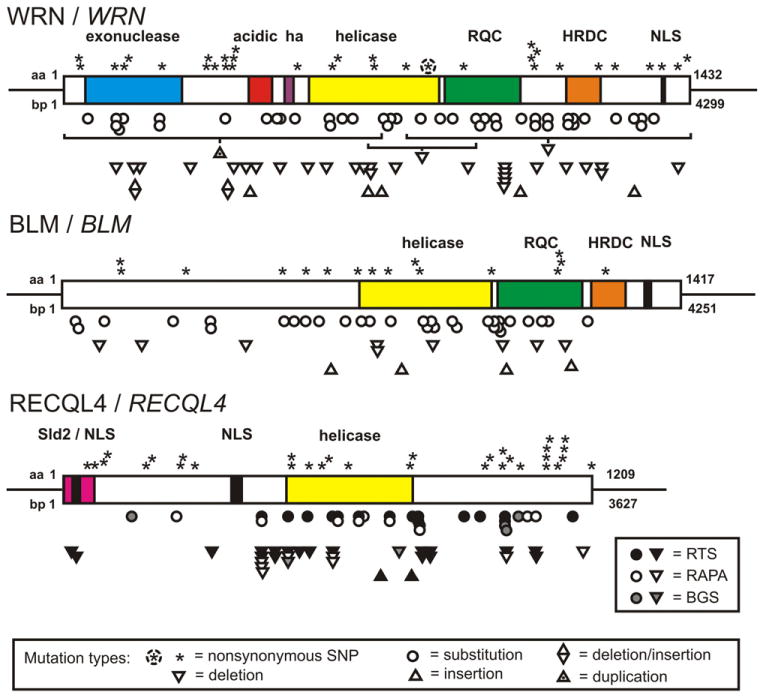Fig. 2.

Disease-causing mutations in human RECQ helicase genes. WRN, BLM and RECQL4 open reading frames are depicted as boxes with domains indicated as in Fig. 1. Two additional acidic domains are shown for WRN: the acidic repeat domain (acidic) and a short hyperacidic (ha) stretch consisting of aspartic and glutamic acid residues preceding the helicase domain. Residue and bp coordinates are shown to the left of the beginning of each protein. Coding region non-synonymous SNP polymorphisms are shown above, and clinically ascertained mutations below, each RECQ protein. Mutations, not consequences, are shown; and only single examples of specific mutations. The WRN R834C SNP polymorphism is circled (see text), and large deletions and a duplication are indicated by a horizontal line linked to the appropriate type symbol. RECQL4 mutations identified in Rothmund–Thmonson, RAPADILINO or Baller–Gerold syndrome patients are further indicated by the symbol fill, with the key to the lower right.
